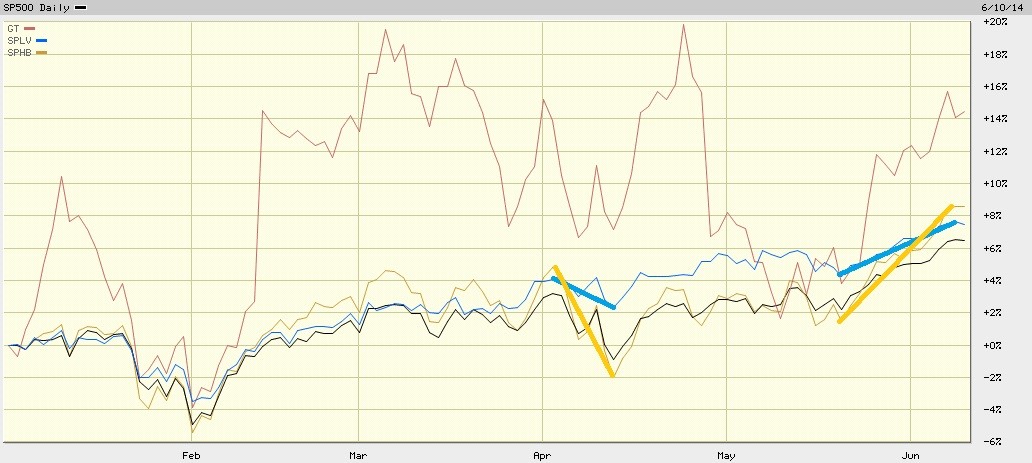HighBeta Or LowVolatility ETFs
Post on: 29 Май, 2015 No Comment

Low-volatility ETFs have been extremely popular with risk-averse investors who want to dip a toe back into the stock market. But what about their mirror image, high-beta ETFs?
After years of holding back, investing in fixed-income assets for safety and yield, investors are now shifting into riskier stocks and exchange traded funds.
As cyclical sector stocks lead the major indices, S&P Capital IQ analysts point to the PowerShares S&P 500 High Beta Portfolio (NYSEARCA:SPHB ) as a good play for the risk-on environment. The high-beta ETF is managed by Invesco PowerShares, the same firm behind the hot-selling PowerShares S&P 500 Low Volatility Portfolio (NYSEARCA:SPLV ).
The two ETFs can be thought of as opposites. Beta is a measure of how closely correlated a stock’s returns are to that of the market. The market has a beta of 1.0, and stocks with a beta of more than 1.0 are more volatile than the market. Conversely, SPLV consists of the 100 stocks from the S&P 500 with the lowest realized volatility over the past 12 months.
We think PowerShares S&P 500 High Beta Portfolio, which earns our highest ETF ranking of Overweight in our multi-factor approach, offers above-average exposure to these sectors, holds many stocks that S&P Capital IQ views favorably and incurs modest costs, writes Todd Rosenbluth, S&P Capital IQ Director of ETF Research, in a research note.
SPHB tracks 100 stocks from the S&P 500 index that have shown the highest betas and holdings are rebalanced quarterly. Top sector allocations include financials, energy, information technology, materials and industrials. Compared to the S&P 500, SPHB leans toward oil & gas exploration & production and semiconductors sub-industries. The fund has a 0.25% expense ratio.
The ETF ranks favorably on S&P’s performance analytics and cost factors, but the analysts warn of potentially elevated risks.
Looking ahead, Sam Stovall, Chief Equity Strategist for S&P Capital IQ, believes cyclical sectors will lead the markets over March after the typical slump in February, according to historical data since 1970.
Historically, the consumer discretionary, materials, energy, financials and industrials sectors outperformed the S&P 500 in March over this period and four of the five (not financials) continued this success in April, Rosenbluth added.
PowerShares S&P 500 High Beta Portfolio
Max Chen contributed to this article .
Disclosure: I have no positions in any stocks mentioned, and no plans to initiate any positions within the next 72 hours. I wrote this article myself, and it expresses my own opinions. I am not receiving compensation for it. I have no business relationship with any company whose stock is mentioned in this article.














